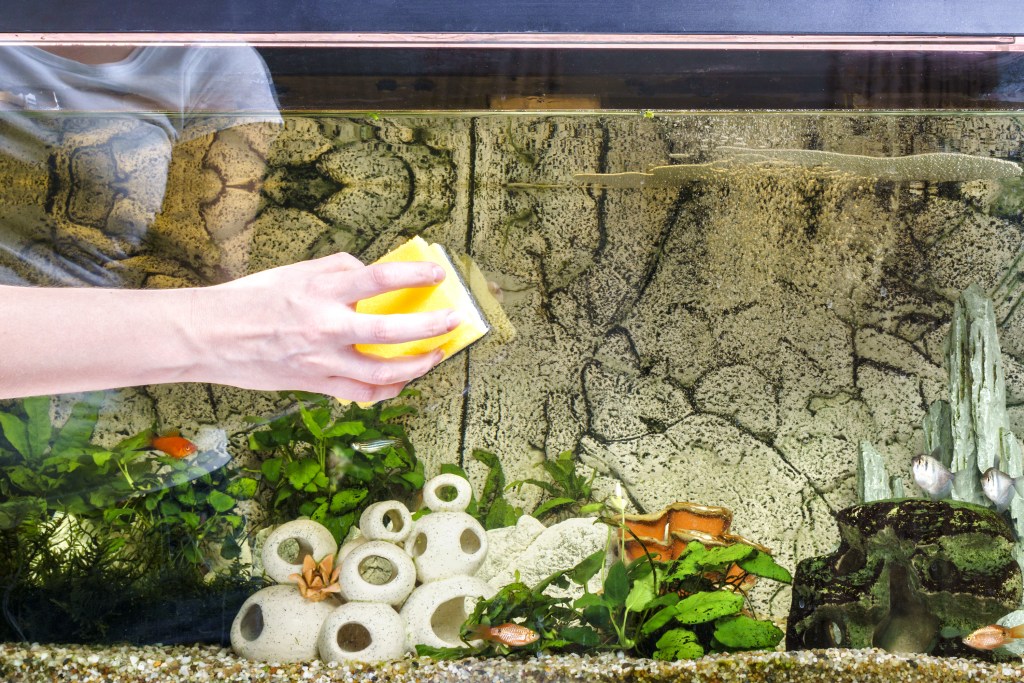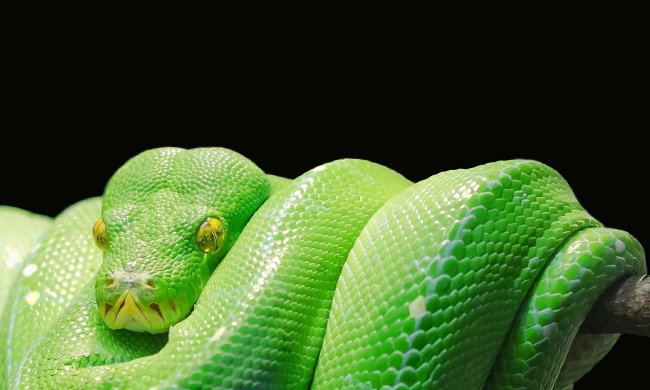All pets require a bit of cleaning up after, and fish are no different. While an aquarium filter, live plants, and even catfish can help keep your deep scrub to a minimum, you’ll have to do both partial and full tank cleans sometimes. We recommend doing a biweekly partial water change and fully deep-cleaning the tank approximately once or twice per year. Be careful, though — overdoing it can actually harm your fish. But you’ll still need to completely empty the tank and do a full water change at some point, especially when you have a disease outbreak. Here’s how to clean a fish aquarium when the time comes.
But before you begin, here’s what you’ll need:
- Bags or a small tank to transfer your fish to
- Aquarium-safe cleanser
- Aquarium-safe conditioner
- Algae scraper pad
Keep it clean
Okay, we get that this part seems obvious. But the best defense is a good offense, and that’s true for your aquarium, too. A fish tank functions as a mini-ecosystem, and keeping everything in balance helps ensure it stays clean. The most important piece of this will be your filter, but other things matter as well, like maintaining the correct nutrient, light, and pH balances. Also, too many fish in the tank will make it essentially impossible to keep everything good and safe — make sure your tank is the correct size for your fish, and your filter is the correct size for your tank.
Take out your fish
Before you begin your thorough fish tank cleaning, you need to remove your fish carefully. You will have to keep some of the old water, as fish shouldn’t be transferred straight into new water that they aren’t used to. You can bag them temporarily or keep them in a smaller tank reserved for cleaning purposes (which will come in handy if a fish ever gets sick and needs to quarantine).
Clean each piece individually
Every filter’s a little different, and you’ll want to read the instructions on exactly how to maintain your particular model. Some include replaceable cartridges that you need to exchange every month or so and definitely during a deep clean. Gravel, accessories, toys, and fake plants will need to be rinsed and wiped down as well.

Scrub the tank
As grime, fish poo, and algae accumulate, you might notice the water start to turn funny colors. Even after you dump it all out, you’ll probably still have some residue that needs to be removed. As part of your deep clean, you’ll have to apply a little elbow grease by scrubbing every side of the tank. Don’t forget the lid, which can get dirty in the hinges especially. Use only aquarium-safe cleansers for this process as household chemicals might harm fish.
Treat your new water
Hopefully, your water supply stays the same, which means it should at least be close chemically to what’s in your tank. You’ll most likely need to adjust it a bit, and remember that chlorine might lurk in tap water and will kill fish quickly. Luckily, conditioners rectify this easily and will adjust your water to your pet’s liking. Always let it sit for a bit, even if you use an additive, to bring it up to the right temperature.
Add everything back
Start as if the tank were new. First gravel. Then plants and accessories. Pour the water on top. You may get a little cloudiness when you first put it all back in. While some is almost inevitable, a thick, cloudy white water means something — probably your gravel — needs another scrub. Yup, that involves taking everything back out and rinsing it again. Run your full set of tests once everything’s settled but before the fish have been returned.
Replace your fish
Here’s the tricky part. Even if the water stays basically the same, your finicky fish might have a little trouble getting used to it. You should add your pets back slowly, as you did when you first brought them home from the pet store, to account for temperature and pH changes. If you bagged them, you can add those back first while they acclimate. Otherwise, put the tanks right next to each other under the same conditions, which will get them in line with each other.
In addition to this deep clean, don’t forget to do biweekly water changes and to remove anything dead from the tank as soon as you find it. That includes leaves, which can decay and dirty up the water and any fish who pass. But remember: Don’t overdo it. Your fish will be happiest if you change only 10% to 15% of their water at a time.




